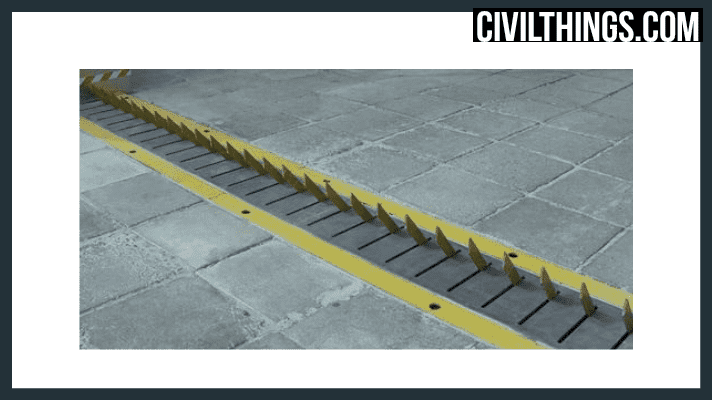The 7-Second Trick For Wedge Barriers
Table of ContentsThe Wedge Barriers IdeasWedge Barriers for Dummies

Wedge Barriers Fundamentals Explained
The staying pressure applied to
the cam camera deploy release wedge plate 16 may might provided given an electromechanical actuator 84 or other actuator. The springtime setting up 54 and the actuator 84(e. Wedge Barriers. g., electromechanical actuator)may operate together to translate the webcam and raise the wedge plate 16.
As stated over, the spring setting up 54 applies a consistent pressure on the web cam, while the electromechanical actuator might be managed to put in a variable force on the webcam, thereby making it possible for the lifting and lowering( i. e., releasing and withdrawing )of the wedge plate 16. In particular embodiments, the continuous force applied by the spring assembly 54 might be adjustable. g., electromechanical actuator) is impaired. As will be appreciated, the spring assembly 54 might be covered and safeguarded from debris or other aspects by a cover plate(e. g., cover plate 68 shown in FIG. 4) that may be significantly flush with the raised surface 38 of the foundation 14. As mentioned over, in the released position, the wedge plate 16 offers to block access or travel past the obstacle 10. As an example, the obstacle 10(e. g., the wedge plate 16 )might obstruct pedestrians or lorries from accessing a home or path. As gone over above, the barrier 10 is attached to the anchor click over here now 30 safeguarded within the foundation 14,

front brackets 71. As an outcome, the linkage settings up 72 may pivot and rotate to make it possible for the collapse and expansion of the affiliation settings up 72 during retraction and release of the bather 10. The link assemblies 72 reason activity of the wedge plate 16 to be restricted. As an example, if a car is taking a trip in the direction of the deployed wedge plate 16(e. As an example, in one scenario, the security legs 86 may be prolonged duringmaintenance of the barrier 10. When the safety and security legs 86 are released, the safety legs 86 support the weight of the wedge plate 16 versus the surface area 12. Therefore, the lifting device 50 may be shut down, serviced, gotten rid of, changed, etc. FIG. 5 is partial perspective view of a personification of the surface-mounted wedge-style barrier 10, illustrating the camera 80 and the cam surfaces 82 of the training mechanism 50. Especially, two webcam surface areas 82, which are described as lower web cam surfaces 83, are positioned listed below the cam 80. The lower camera surface areas 83 might be repaired to the surface 12 (e. As an example, the lower cam surface areas 83 and the mounting plate 85 might develop a single item that is safeguarded to the support 30 by bolts or other mechanical fasteners. In Clicking Here addition, two camera surface areas 82, which are described as top cam surfaces 87, are positioned above the camera 80 and paired to (e. In various other embodiments, interfering layers or plates may be placed in between the surface area 12 and the lower camera surfaces 83 and/or the wedge plate 16 and the top cam surfaces 87 As pointed out over, the web cam
80 translates along the cam surfaces 82 when the wedge plate 16 is lifted from the pulled back placement to the released placement. In addition, as pointed out above, the spring setting up 54 (see FIG. 3 )might provide a pressure acting upon the camera 80 in the instructions 102 using springtime rod 58, which may lower the pressure the electromechanical actuator 84 is called for to use to the web cam 80 in order to activate and lift the wedge plate 16. 1 )to the deployed setting(see FIG. 4). As shown, the webcam 80 includes track wheels 104(e. g., rollers), which call and equate along the camera surfaces 82 during operation.